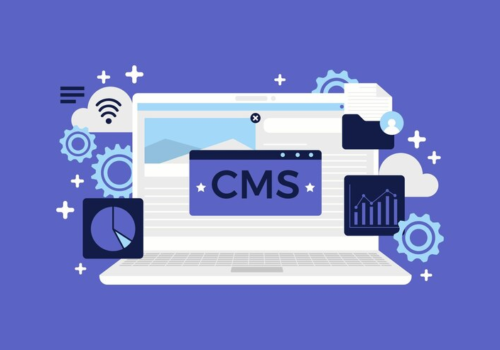Comparing AEM and WordPress: Which Suits Your Business?
In the digital age, selecting the right content management system (CMS) is crucial for effective online presence and engagement. Two leading contenders, Adobe Experience Manager (AEM) and WordPress, offer unique functionalities and advantages.
This article delves into a detailed comparison of these platforms, focusing on their features, ease of use, cost, and suitability for various business sizes. Whether you’re a small startup or a large enterprise, understanding the nuances of AEM and WordPress can empower you to make an informed decision for your digital strategy.
Comparative Insights into AEM and WordPress
For organizations aiming to captivate and retain their audience through digital content, the selection of an appropriate content management system (CMS) is pivotal. The initial interaction of users with elements such as load speed and user interface plays a significant role in engagement levels. Opting for an advanced, well-acknowledged CMS is vital for crafting a resonant brand identity and efficiently connecting with the intended market segment.
AEM and WP are internationally renowned CMS platforms, each powering a significant number of online domains. Notable for their efficacy in achieving business goals, these systems provide distinctive attributes tailored to varied organizational needs. The choice between AEM and WP should be made by closely aligning their features with your specific business aspirations, aiming to enhance your digital footprint.
Comprehensive Analysis: AEM vs WP
User Experience as a Priority:
- Both AEM and WP place a strong emphasis on user experience, delivering interfaces that are intuitive for both site visitors and content managers.
Financial Aspects:
- AEM is typically more investment-intensive, aligning with the needs of medium to larger organizations. Conversely, WP is recognized for its affordability, making it an optimal choice for smaller businesses.
Support Structures:
- AEM is equipped with dedicated support services, in contrast to WP, which relies on a vast community-driven support framework due to its open-source nature.
Advantages and Limitations:
- AEM is adept in facilitating cross-channel content adaptation and swift page development, particularly advantageous for larger enterprises;
- WP, known for its extensive range of complimentary themes and add-ons, is well-suited for small to medium-sized businesses, though it faces challenges in security due to its reliance on third-party enhancements.
Deployment Versatility
Both AEM and WP are compatible with cloud and Software as a Service (SaaS) models, with WP additionally offering extensive mobile platform support.
Detailed Feature Analysis:
- WP: Celebrated for its simplicity and ease of access, WP is a favored choice among smaller enterprises. The comprehensive library of add-ons enhances WP’s functionality, although it can sometimes adversely affect website performance. The introduction of headless WP has added a layer of flexibility, albeit necessitating specialized expertise for implementation;
- AEM: Distinguished by its custom-tailored solutions and forward-thinking approach, AEM integrates seamlessly with cloud services, ensuring a nimble and efficient system. AEM’s multilingual capabilities and bespoke content presentation tools, including diverse components and content fragments, render it a formidable option for achieving global outreach and intricate content management.
Advanced Features of AEM:
AEM’s collaboration with Adobe Target for refined testing and personalization, coupled with its proficiency in managing Single-Page Applications (SPAs), underscores its suitability for complex, expansive digital infrastructures.
Selecting the Appropriate CMS: AEM or WP?
The decision between AEM and WP rests on the unique requirements and organizational scale. WP generally serves small to medium-sized businesses effectively, courtesy of its user-friendliness and cost efficiency. In contrast, AEM shines in managing content and data for larger enterprises, thanks to its array of advanced features and integration capabilities.
When overlooking the aspects of complexity and investment, AEM often provides a more comprehensive solution than WP for websites demanding extensive customization and scalability. Nonetheless, the ultimate choice should be based on a thorough evaluation of your business objectives and digital aspirations.
Factors to Consider in Choosing Between AEM and WP
Selecting between AEM and WP involves weighing several key factors:
- Scalability and Adaptability: WP caters well to basic-to-moderate growth needs, whereas AEM is equipped for high scalability and adaptability, suited for large digital ecosystems;
- Customization Options: WP offers a plethora of themes and extensions, whereas AEM enables deeper customization possibilities, ideal for crafting unique digital experiences;
- Security and Stability: WP generally maintains security but can be susceptible due to external add-ons, whereas AEM provides comprehensive security measures, crucial for safeguarding sensitive corporate data;
- Technical Knowledge Required: WP is renowned for its user-friendly nature, requiring minimal technical skills, in contrast to AEM, which necessitates more advanced technical proficiency, particularly for bespoke development;
- System Integration: WP efficiently integrates with numerous tools and services but may face limitations with complex integrations. AEM, however, offers seamless integration with a broad spectrum of enterprise-level systems and Adobe services;
- Budgetary Considerations: WP is a more economical solution, suitable for budget-conscious businesses, while AEM, with its extensive feature set, justifies its higher cost for larger entities.
Exploring Alternative CMS Options
Beyond AEM and WP, the digital arena presents other platforms like Medium and Substack, each with distinct features and audience-specific functionalities. Medium stands out as a streamlined publishing platform aimed at content creators and readers, offering a minimalist interface. Substack has risen in popularity with its focus on newsletter-based content, providing tools for email subscription management and monetization strategies.
Comprehending the unique aspects of these platforms, alongside AEM and WP, assists in identifying the most suitable CMS for your content strategy and audience engagement objectives. Delve deeper into this topic in our detailed comparison article on Medium, Substack, and WP.
Conclusion
This article has provided a thorough examination of the distinct attributes, benefits, and limitations of AEM and WP. From the initial overview to the detailed feature analysis, it’s clear that the choice between AEM and WP is largely influenced by the organizational scale, complexity, and specific operational needs.
While WP presents an accessible, budget-friendly solution for small to medium-sized enterprises, AEM offers a more robust and extensive framework, ideal for large-scale, enterprise-level content management. The decision should be grounded in a strategic review of your business requirements, growth projections, and the desired level of customization and scalability.
Ultimately, whether opting for AEM, WP, or considering alternatives like Medium and Substack, the optimal CMS is one that integrates seamlessly into your digital strategy, enhancing your online presence and fostering audience engagement.





